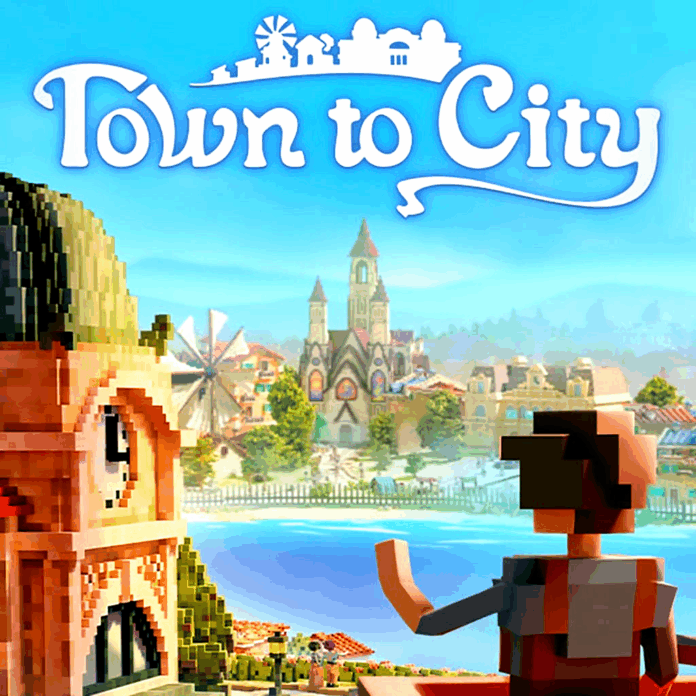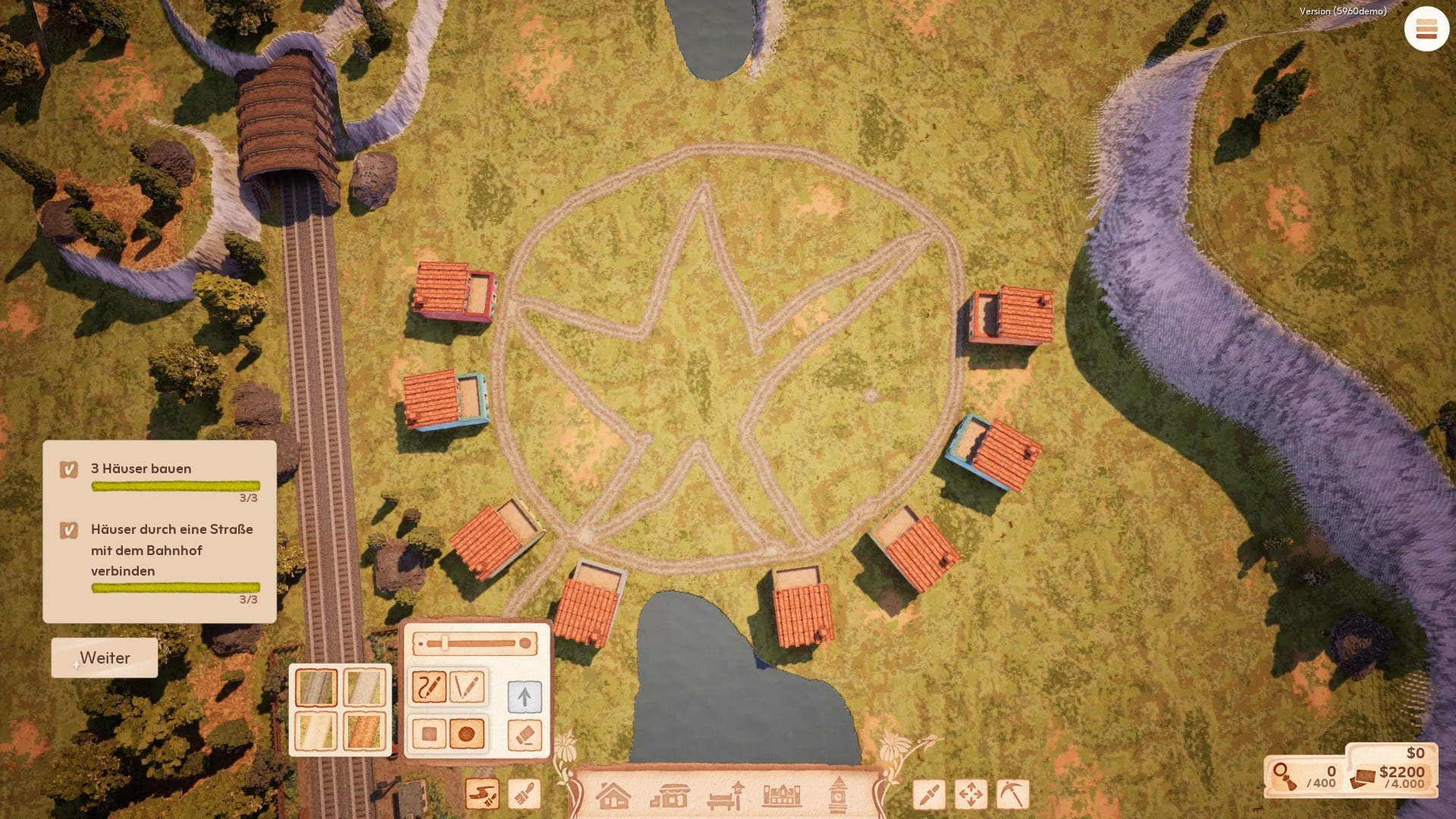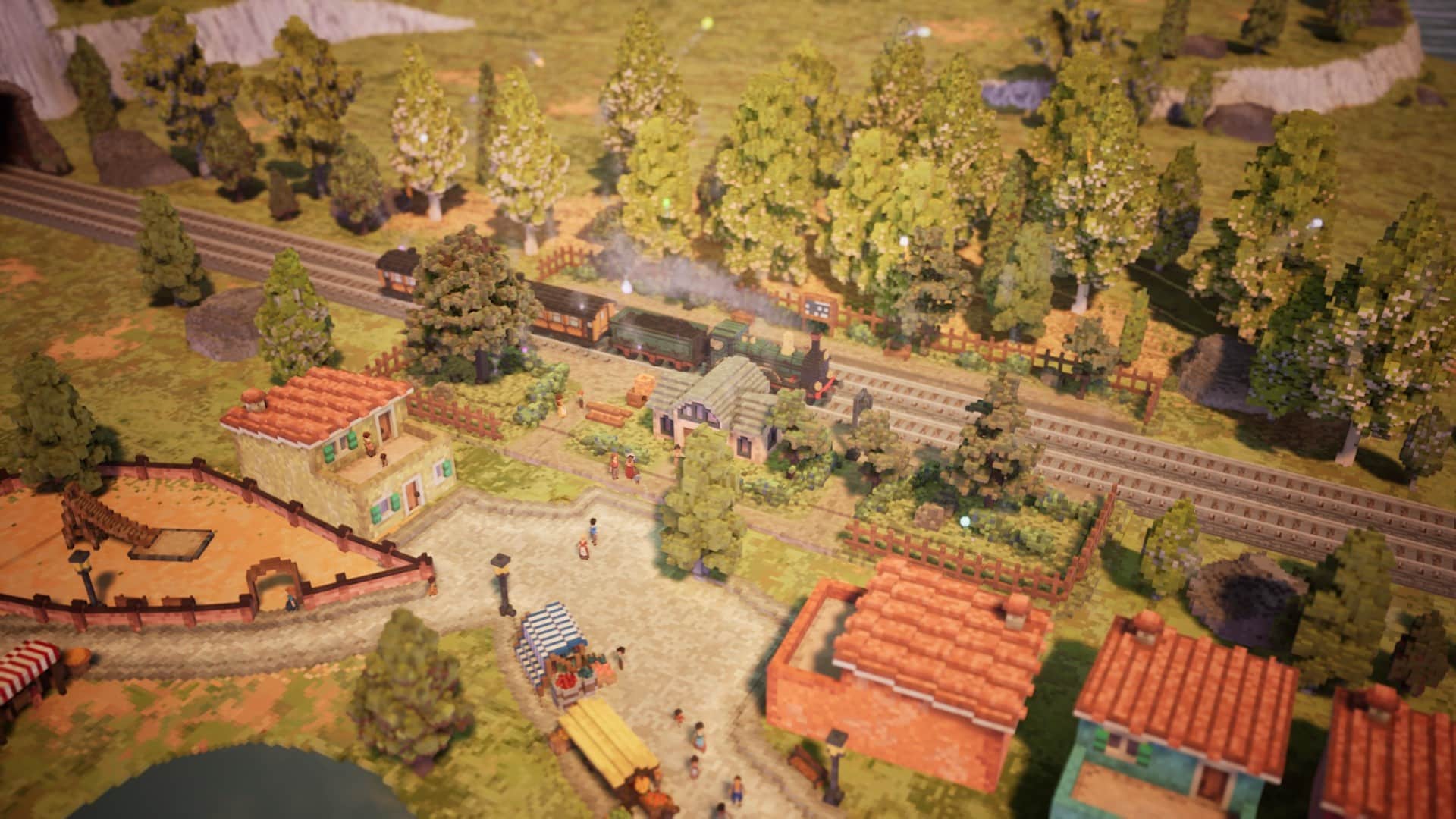Despite its blocky appearance, Town to City looks extremely atmospheric, but has more to offer than just a few fancy scenes.
Depending on your perspective, Town to City can give you one of two impressions:
Wow! What an atmospheric world! Beautifully lit, great atmosphere. I want to go there!
Oh my, it’s full of building blocks. Why do these people have square heads?
That often depends on the distance from which you view the building game. From a distance, it actually just looks like a very charming, somewhat melancholic city-building game set in the 19th century
But when you zoom in, it takes on a blocky or Minecraft aesthetic That doesn’t necessarily make the game ugly; it’s a valid stylistic choice – but experience has shown that a blocky look still scares more people off than realistic, high-gloss graphics.
I also hesitated when I first saw the demo currently available on the Steam Next Fest browsing page. After playing it,I’m glad I didn’t write the game off based on its voxel look alone Because what Dutch development studio Galaxy Grove is putting together here has the makings of a hidden gem in the building game genre.
What you can expect in Town to City
You all know the concept behind a building game.I start on a green field with trees, lakes, and a few hills, and begin to build. First a few houses, then more and more. People move in, and I make sure there’s enough food. As I do so, I steadily collect money to keep progressing, attract more people, unlock new buildings, and earn even more.
All this awaits you in Town to City, only with a deeply relaxing composition of guitar, accordion, flute, and piano playing in the background to melt away any stress. And…with a unique aestheticthat comes across as really charming despite the many blocks and contributes to the afternoon Mediterranean atmosphere.
By the way, building in Town to City is completely unrestricted.I can place any building anywhere, free of any grid, and just have to make sure that my little settlement has enough paths and that basic services reach every corner. Roads are neither strictly nor freely drawn – they are painted.
So I can draw my paths anywhere on the ground without any restrictions, as if with a paintbrush, and could even paint pictures in theory. Is that necessary? No. But take a look:
What makes Town to City special
In the demo, I experience the first two settlement stages, which depend on the total population of my town. During this time, what fascinated me most about Town to City was how well this gamebalances some of the most important aspects of the building genre
Building games can be many things. Some focus entirely on stable economic simulation, others are all about tough survival, and still others just want to encourage me to build pretty things. I don’t really have to survive in Town to City, but the building and management aspects go together so harmoniously that I’ve rarely experienced anything like it.
I’m not as creatively free as in games like Tiny Glade, nor am I as administratively challenged as in Anno – but both are part of the game to such an extent that, as a builder of beauty and efficiency, it makes my heart sing.
I have to pay close attention to whether my residents have everything they need and whether fishmongers or tailors are delivering efficiently – but without ever getting stressed out Instead, Town to City always creates effective incentives to customize my city.
When new people arrive by train, they sometimes don’t just want to live in any house.Some newcomers have special requests They want to live in a wooded area, or by the water, or near a market stall. This gently pushes me towards Schönbau, as I automatically build new residential areas in a completely different style than usual.
A really well-done symbiosis I can relax completely with this building game, but my feet don’t fall asleep either. For someone like me, it’s an almost perfect combination. At least on certain days.
I like that, I don’t like that yet
What I like about Town to City
- The atmosphere:Town to City creates a wonderful ambiance inspired by 19th-century coastal towns. Combined with the beautiful background music, picturesque towns, and melancholic lighting, I can’t help but smile pensively.
- Building beauty:Town to City invites you to relax and build, offering an abundance of embellishments. At the same time, however, it provides real incentives to place these embellishments, either through specific requests from residents or through a number of concrete quests.
- The challenge:Town to City is not a hard-core efficiency game, but it doesn’t completely abandon the playful challenge either. It gives me enough to do to keep me on the ball even when I’m not feeling particularly creative.
What I don’t like about Town to City yet
- The aquarium effect:Town to City creates a pretty backdrop that I can put my own stamp on. But there’s still not much going on. The streets are rarely really lively, and even the production facilities don’t give me the feeling that people are actually working there.
- The overview:Town to City is actually good at pointing out problems in the city and has a very easy-to-read interface. But when residents are dissatisfied, I don’t yet see exactly what they are missing. The info windows should provide a few more clues.
Editorial conclusion
What a charming little find! I had never heard of Town to City before and was really amazed at how well this game meets my building needs. It’s certainly not going to be the next big Anno killer, but it’s carving out a cozy little niche for itself among its bigger competitors. Everything just fits together here! The atmosphere, the challenge, and the potential to build really beautiful, unique towns. If it all becomes a little more lively, I can highly recommend Town to City.




